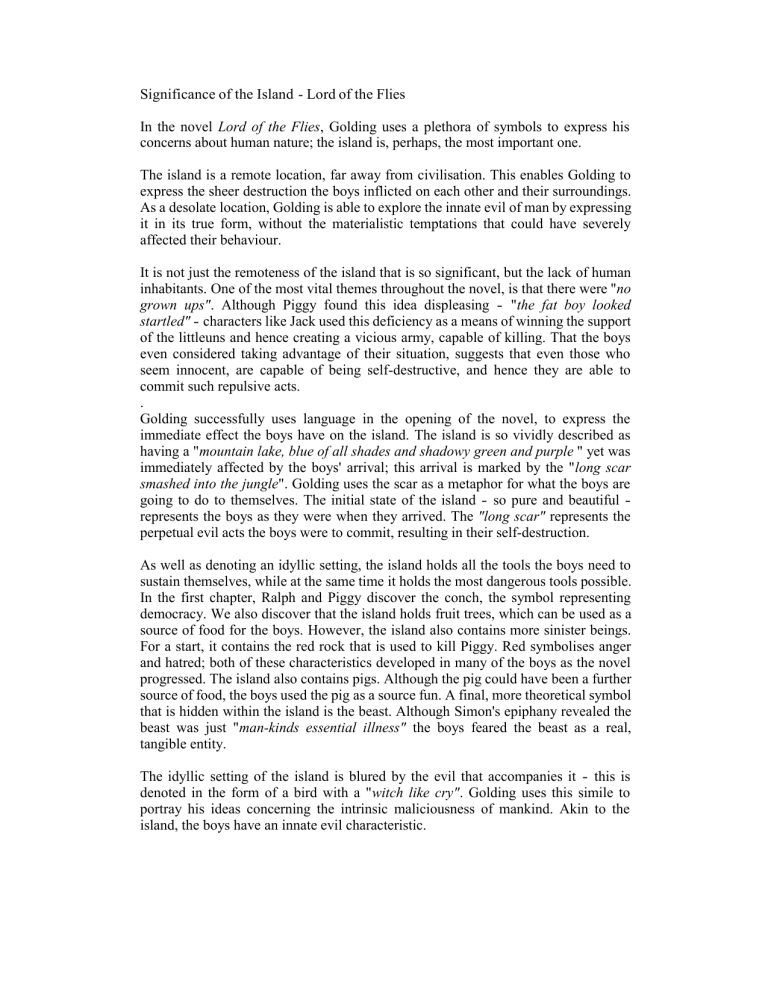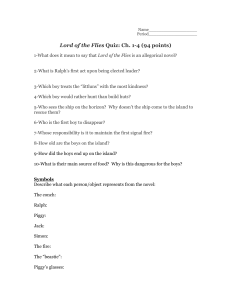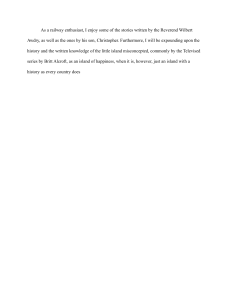
Significance of the Island - Lord of the Flies In the novel Lord of the Flies, Golding uses a plethora of symbols to express his concerns about human nature; the island is, perhaps, the most important one. The island is a remote location, far away from civilisation. This enables Golding to express the sheer destruction the boys inflicted on each other and their surroundings. As a desolate location, Golding is able to explore the innate evil of man by expressing it in its true form, without the materialistic temptations that could have severely affected their behaviour. It is not just the remoteness of the island that is so significant, but the lack of human inhabitants. One of the most vital themes throughout the novel, is that there were "no grown ups". Although Piggy found this idea displeasing - "the fat boy looked startled" - characters like Jack used this deficiency as a means of winning the support of the littleuns and hence creating a vicious army, capable of killing. That the boys even considered taking advantage of their situation, suggests that even those who seem innocent, are capable of being self-destructive, and hence they are able to commit such repulsive acts. . Golding successfully uses language in the opening of the novel, to express the immediate effect the boys have on the island. The island is so vividly described as having a "mountain lake, blue of all shades and shadowy green and purple " yet was immediately affected by the boys' arrival; this arrival is marked by the "long scar smashed into the jungle". Golding uses the scar as a metaphor for what the boys are going to do to themselves. The initial state of the island - so pure and beautiful represents the boys as they were when they arrived. The "long scar" represents the perpetual evil acts the boys were to commit, resulting in their self-destruction. As well as denoting an idyllic setting, the island holds all the tools the boys need to sustain themselves, while at the same time it holds the most dangerous tools possible. In the first chapter, Ralph and Piggy discover the conch, the symbol representing democracy. We also discover that the island holds fruit trees, which can be used as a source of food for the boys. However, the island also contains more sinister beings. For a start, it contains the red rock that is used to kill Piggy. Red symbolises anger and hatred; both of these characteristics developed in many of the boys as the novel progressed. The island also contains pigs. Although the pig could have been a further source of food, the boys used the pig as a source fun. A final, more theoretical symbol that is hidden within the island is the beast. Although Simon's epiphany revealed the beast was just "man-kinds essential illness" the boys feared the beast as a real, tangible entity. The idyllic setting of the island is blured by the evil that accompanies it - this is denoted in the form of a bird with a "witch like cry". Golding uses this simile to portray his ideas concerning the intrinsic maliciousness of mankind. Akin to the island, the boys have an innate evil characteristic. Not only does the island hold many symbols in and of itself, but the island can be used as a metaphor to describe the innate evil of man-kind. Although the island has a 'lighter side' to it, there are also connotations of a 'darker side'; this is a perfect metaphor for human-kind. There are good people and bad people. Within both types of people there is a good side and a darker side. Golding ingeniously uses the island, along with many other symbols, as a way of depicting the true nature of man. In Golding's novel, Lord of the Flies, the island is a contrivance, used to express "man-kinds essential illness". The lack of materialistic temptations and the apparent vividness of the island, along with all its opportunities, should have prevented the boys from communicating with their animalistic characteristics. However, the fact they ignored their innate goodness and decided to live an atrocious life, suggests that "man-kinds essential illness" is incorrigible.



